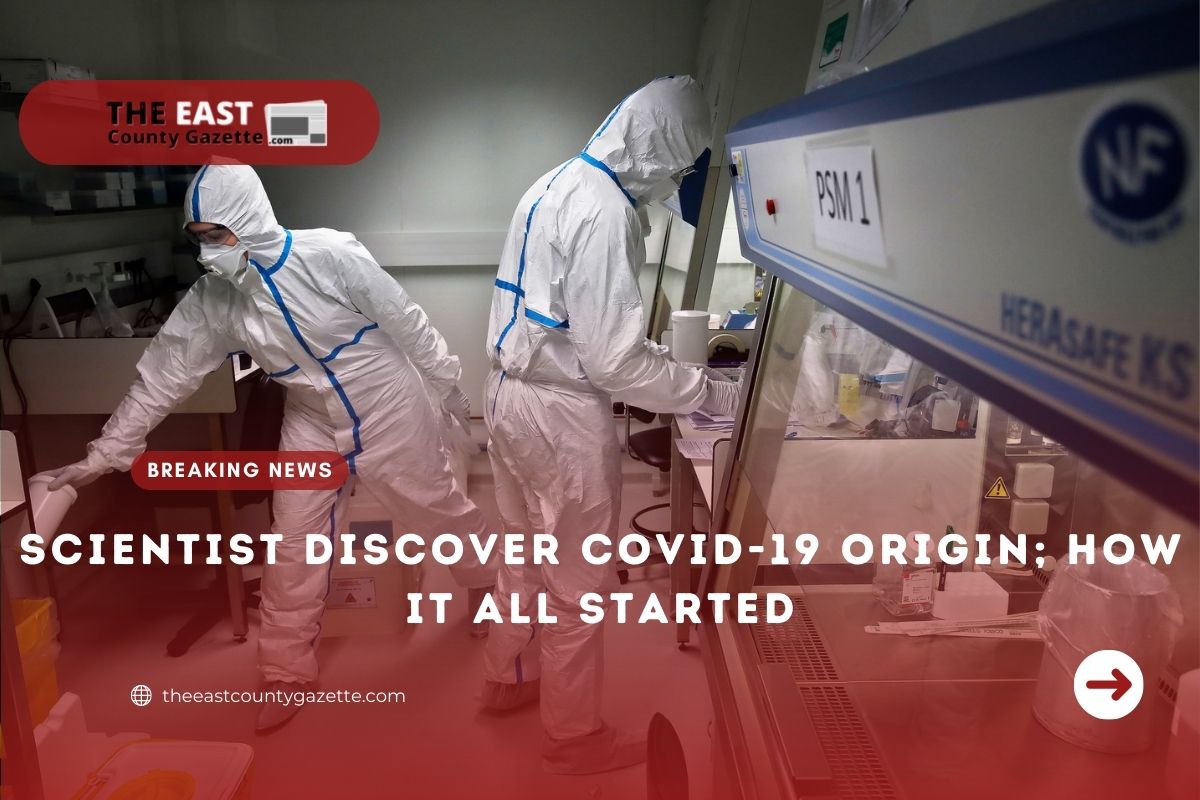A scientist who has been studying the Covid-19 pandemic from the beginning asserted on Thursday that a direct link to the origin of the outbreak lies in the Huanan seafood market in Wuhan, China.
Michael Worobey, a researcher at the University of Arizona, compiled a comprehensive timeline of all known cases of SARS-Cov-2 prior to the pandemic.
Many of the cases were found in people living or working near the market, which was initially suspected as the source, even if they did not have direct connections to it.
The Chinese government attempted to deflect blame, regardless.
This comes after intelligence officials in the Trump administration, and then in the Biden administration, hinted at Wuhan being a potential site for virology research, but the picture has become confused.
Worobey, who studies how viruses evolve genetically, found substantial evidence that the virus originated in a creature or animal, and it didn’t begin circulating until the end of the year in 2019.
He has published multiple studies on the probable origins of the virus.
In spite of this, he stated that he wanted to evaluate his own theories in light of real-world evidence gathered from actual individuals who had been infected.
As a result, he investigated the known cases. Based on what he found, he believes that the virus was indeed spread by animals that were sold at the market in Wuhan — This is similar to the original SARS outbreak in 2002-2004, which sickened 8,000 people before being contained.
However, there was one case in particular that stood out.
It is the story of an accountant, 41, who allegedly fell ill on December 8, 2019. and there was no connection between him and the market.
According to experts, the case showed that the pandemic didn’t originate at the market.
Read More: Winter Booster Shot: A Bizarre New Covid Toes Side Effect Emerges Among Americans
But during Worobey’s investigation, records showed that the man was not diagnosed with Covid-19 until late December and the issue he had on December 8 was Just related to his teeth.
“This is corroborated by hospital records and a scientific paper that reports his COVID-19 onset date as 16 December and date of hospitalization as 22 December,” Worobey penned in the journal Science.
It’s possible that the seafood vendor who worked at the market and became ill on December 11, 2019, was the first to be documented, Worobey announced.
To further support his findings, Worobey said, he came up with a map that clustered the earliest cases around the market.
“That so many of the more than 100 COVID-19 cases from December with no identified epidemiologic link to Huanan Market nonetheless lived in its direct vicinity is notable and provides compelling evidence that community transmission started at the market,” he wrote.
Big Red Flag
“It tells us that there’s a big red flashing arrow pointing at Huanan Market as the most likely place that the pandemic started,” Worobey said to CNN.
“The virus didn’t come from some other part of Wuhan and then get to Huanan market. The evidence speaks really quite strongly to the virus starting at the market and then leaking into the neighborhoods around the market.”
Also, World Health Organization officials investigated the origin of the pandemic and concluded it was caused by animals.
Nevertheless, WHO said its conclusions were not conclusive and requested more information and access from the Chinese government.
Worobey said that this information may never be made public. As the risk of further spread of infectious diseases spread, the Chinese government disinfected the Huanan market and removed all animals, destroying crucial evidence, but removing all risk of the disease spreading.
“I wouldn’t call this conclusive evidence, but I would call this pretty darn strong evidence,” Worobey said.
The journal Science subjected Worobey’s research to outside scrutiny before publishing it. And Peter Daszak, president of EcoHealth Alliance and one of WHO’s investigators, said he thinks it holds up.
“I was really impressed with the detective work he’s put in. Everything he says about the Dec 8th case fits with what we experienced in Wuhan on the WHO trip — there were a cluster of early cases coming into hospitals in late December and clinicians worked back to the presumed date of onset,” Daszak told CNN by email.
“They just made a mistake with this person because he likely visited the hospital for another reason. This puts the first known case as a Huanan market worker, not the accountant who lived near one of the Wuhan lab campuses,” Daszak added.
“This is now adding to around 10 pieces of other scientific evidence that I’ve seen since the end of our WHO work, all of which point towards an origin through the wildlife farms and markets. No single piece of evidence is totally conclusive, but when you lay them all out, it really tips the balance towards the ‘natural’ origin.”
Read More: Are You Among the 88% of Americans Worried About Inflation?
Worobey joined a group of scientists who signed a letter in Science in May saying the theory that the coronavirus leaked from a lab needs thorough investigation.
“I co-signed that letter in Science suggesting that the lab leak needs to be investigated, which I still believe and that it should be,” Worobey told CNN.
“But in the meantime, holy smokes — is there a lot of evidence against it and in favor of natural origin.”

